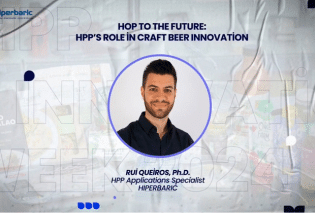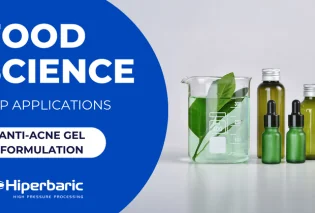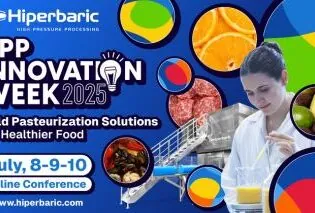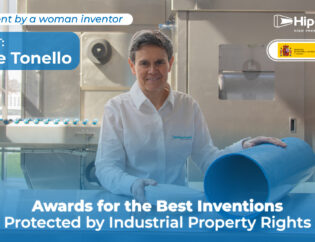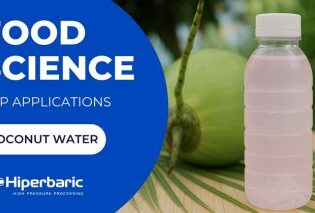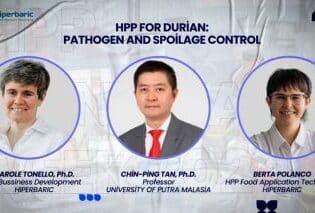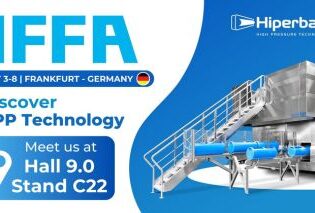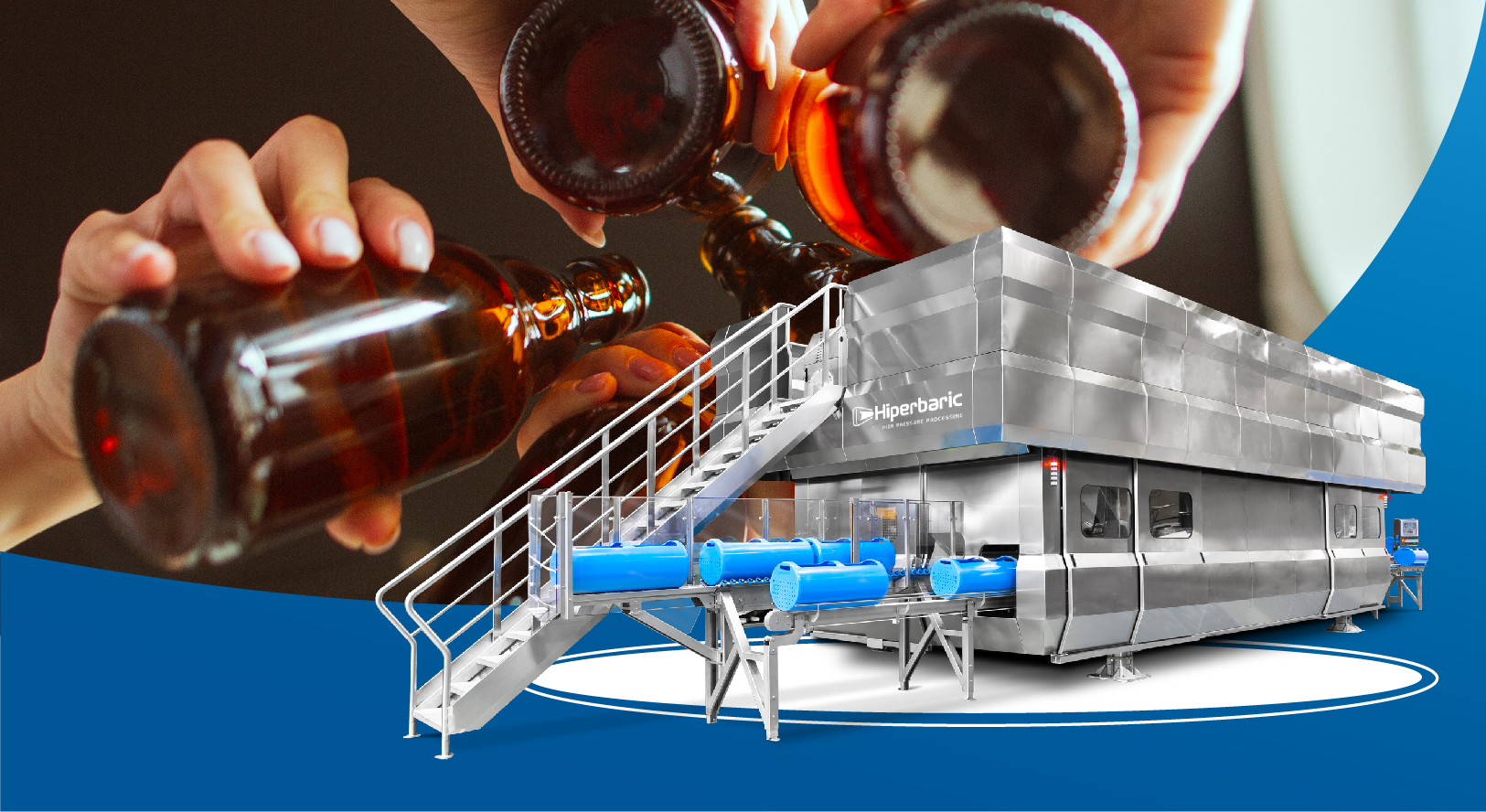
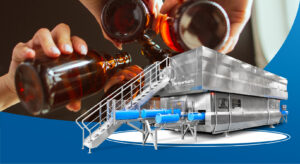
The industry of fermented beverages (beer, wine, cider) and distilled spirits represents an important economic sector. Maintaining the tradition in the making process of these beverages faces challenges that require innovative solutions to meet consumer needs. High Pressure Processing (HPP) is a nonthermal food preservation technology that inactivates spoilage microorganisms and pathogens while keeping food properties intact. This opens the door to developing new products that maintain the quality traits of traditional foods. Keep reading to learn how HPP can support the alcoholic beverages industry.
The first evidence of food fermentation for human consumption dates back more than 13,000 years: the residue of a thick paste found in a stone-craved bowl in a cave in Israel is believed to be the most primitive beer. More recently (around 7,000 years ago) wine appeared in the Caucasus region, but it had to reach Greece to standardize its production and popularize its consumption. Finally, it was not until the Middle Ages when distillation was mastered and used for beverage production. Nowadays, these three product categories are part of a buoyant economic sector with more than 446 billion liters (117 billion gallons) consumed across the globe (Figure 1).
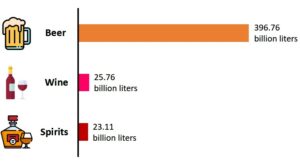
Rather than innovation, preserving tradition became the main focus of the alcoholic beverages industry since the 19th century. Whereas the high ethanol content of distilled beverages (>30%) serves for their preservation, more sophisticated methods had to be developed for beer and wine, which typically have a lower alcohol content (4% to 15%). Therefore, filtration and heat pasteurization conventionally stabilize beer, and additives such as sulfite stabilize wine.
The use of innovative preservation methods such as high pressure processing (HPP) is not at odds with tradition. This technology uses hydrostatic pressure (up to 6,000 bar/87,000 psi) to inactivate microorganisms and/or modify the structure of macromolecules to obtain specific functionalities. It has the potential to replace heat preservation methods or the use of chemical additives, which is in line with the growing demand for more natural and traditional products. Applications of HPP technology on alcoholic beverages are summarized along the following lines:
Benefits of HPP on beer production
Beer is the most popular alcoholic beverage with more than 395 billion liters (104 billion gallons) consumed worldwide annually. Despite the fact that beer represents an inhospitable environment for most microorganisms, some bacterial species have been reported to spoil the freshly fermented beverage. While industrial brewing relies on thermal pasteurization (60 °C/140 °F up to 10 min); craft brewers typically opt for a second fermentation in the final bottle to achieve microbial stabilization and the desired level of carbonation. However, both interventions may have an impact on the quality of beer.
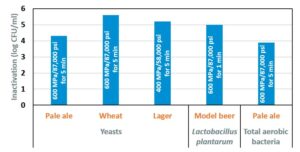
A study conducted on pale ale and mild ale beers showed a sharp decrease of permanent haze, and an increase on color parameters and hydroxymethylfurfural concentration as a consequence of heat pasteurization (60 °C/140 °F for 10 min). On the other hand, high-pressure processed beers (600 MPa/87,000 psi for 5 min) did not significantly differ from unprocessed controls (Castellari et al. 2000). Moreover, additional research describes that pH and alcohol content were not affected original extract, apparent extract and original extracts of lager beer, processed at 550 MPa/79,700 psi for 5 min. Additionally, foam stability increased after HPP compared to unprocessed beers (Štulíková et al. 2020). Similarly, Fischer et al. (1998) reported no changes in color, foam stability and aromatic compounds on lager beer processed at 700 MPa/ 101,500 psi for 5 min.
In addition to quality attributes, HPP also ensures microbiological stability of beer by the inactivation of bacteria and yeasts (Figure 2). This prevents further fermentation and ensures a stable product through storage
An alternative application of HPP for beer production is the gelatinization of barley starch to facilitate the action of a- and b-amylases aiming the replacement from mashing in the heating step, although it has not been applied at the industrial scale. This would save energy, time and could create new flavor profiles in the final beer (Buckow et al. 2007).
High Pressure Processing for wine
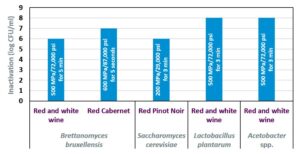
More than 25 billion liters (6.6 billion gallons) of wine are consumed worldwide every year. The estimated market value for this product was worth USD 364 billion in 2019, and is expected to grow to USD 444.93 billion by 2027 (Fortune Business Insights, 2018).
The complex flavor of wine is a result of multiple interrelated variables (grape variety, climatic conditions, maceration, fermentation or aging, among others). Hence, the final product is unique and susceptible to alterations, including microbiological spoilage. Sulfite has traditionally been used as a chemical preservative, but wineries are seeking for alternatives. Some research findings show the potential of HPP to reduce typical spoilage microorganisms of wine (Figure 3).
Yeasts such as Brettanomyces bruxellensis and bacteria such as Lactobacillus plantarum, Acetobacter aceti and Acetobacter pasteurianus are effectively controlled. Nonetheless, this only makes sense if the quality attributes of wine are also preserved. A study on Sicilian red wine (Nero D’Avola-Syrah) revealed no significant differences in the intensities of multiple sensory attributes between unprocessed and high-pressure processed (650 MPa/94,300 psi for 15 min) wine samples (Figure 4) (Tao et al. 2012). It is worth noting that the HPP conditions used in the study exceed the operating range of industrial equipment (typically 600 MPa/87,000 psi up to 6 min).
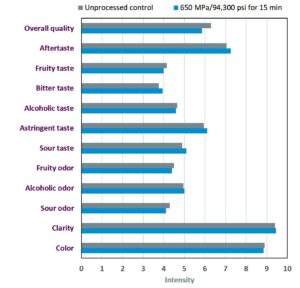
The potential of HPP to reduce spoilage microorganisms in wine while preserving its delicate sensory attributes facilitates a reduction in the use of sulfite as chemical preservative. Lukić et al. (2020) reported that mild HPP conditions (200 MPa/29,000 psi for 5 min) combined with a reduction of sulfite and the addition of glutathione (i.e. a clean label antioxidant) were enough to preserve the quality of red Cabernet Sauvignon and white Graševina wines for 12 months (Figure 5).
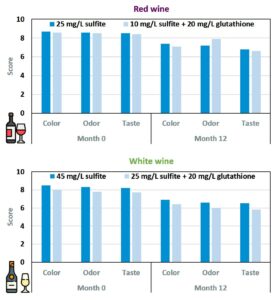
Despite being a novel technology, HPP preserves wine’s delicate features. This allowed the recognition of the process as a valid oenological practice by the International Organization of the Vine and Wine (OIV). Alternative applications of HPP in the wine industry include aging acceleration by inducing polyphenol condensation and Maillard and esterification reactions (Santos et al. 2019). In particular infusion of aroma compounds from wooden chips induced with HPP can accelerate wine aging and may develop new flavor profiles (Valdés et al 2021).
Is packaging a limitation?
Beer and wine are traditionally commercialized on glass bottles, metallic cans and kegs. This could be seen as a limitation for the use of HPP technology because the conventional process is applied on already packaged products. Since packaging must be flexible, elastic and waterproof to withstand the hydrostatic pressure; yet glass and steel do not comply with these criteria.
Whereas using plastic bottles could be a solution for the successful application of HPP, it may not be a commercially appealing display for high value-added products. To overcome this limitation, Hiperbaric developed the in-bulk concept, which allows the application of HPP to liquid products before packaging. Therefore, the high-pressure processed beverages can be packaged in whatever final format is desired.
Alternatively, filling recyclable PET kegs for the subsequent application of HPP is also a suitable solution. To make this possible, Hiperbaric and Petainer have partnered to develop the world’s first keg for high pressure processing of beverages. Craft brewers may benefit from this approach to preserve the quality of freshly fermented beer by preventing undesired microbial growth during transportation and distribution.
Back to the roots of craft cocktails
With more than 23 billion liters (6.1 billion gallons) consumed worldwide on a yearly basis, distilled beverages represent an important market. In the United States, more than one third of the alcohol market share corresponds to liquors. This product category already enjoys from microbiological stability because of the high temperatures applied in the distillation process. Additionally, the high ethanol content in the final products prevents microbiological spoilage.
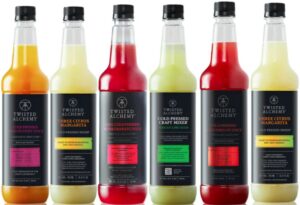
High Pressure Processing technology brings value to this product category when applied to the cold-pressed juices that are mixed with liquor. The nonthermal process extends the shelf life of the juice without comprising its nutritional and sensory quality attributes. The intense aroma and flavor of fresh fruit are better preserved compared to heat pasteurized juice or sparkling drinks. Additionally, this approach provides ready-to-serve juice at any time, which saves hours of juicing behind the bar.
There are already companies who claim the benefits of this method. TWISTED ALCHEMY uses HPP technology to preserve the quality traits of hand-squeezed and cold-pressed juices obtained from carefully selected fruits (Figure 6). This brings several benefits to anyone making cocktails: labor cost savings, longer shelf life, homogeneous product, water savings and fresh flavor attributes. The company recently partnered with Disney to mix their cold-pressed juice to create an alcohol beverage using the Petainer Keg at EPCOT Disney
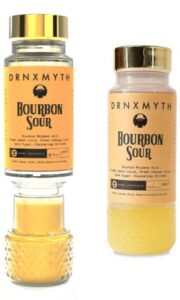
The company DRNXMYTH also preserves cold-pressed juice using HPP technology. The revolutionary design of their patent-pending bottle separates juices from spirits. Rotating the bottom of the bottle and shaking allows the combination of the juice with the liquor (Figure 7). Cold distribution and commercialization ensure that the cocktails remain ice cold as they are delivered and served.
Overall, High Pressure Processing technology has the potential to stabilize fermented alcoholic beverages from a microbiological point of view without the use of chemical additives or thermal pasteurization. In addition to microbial control, alternative applications such as acceleration of aging or enhanced enzymatic digestion would make traditional production processes more efficient. In the field of cocktails, HPP preserves the natural attributes of cold-pressed fruit juices, which creates a more refreshing and easier experience of mixing liquors with a wide range of juice blends.
Do not hesitate to reach out to Hiperbaric if you have any further questions or would like to learn more.


